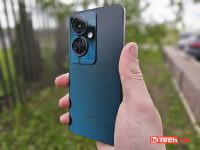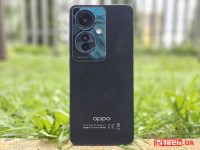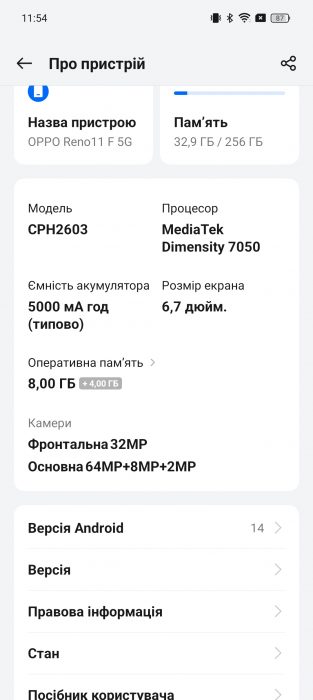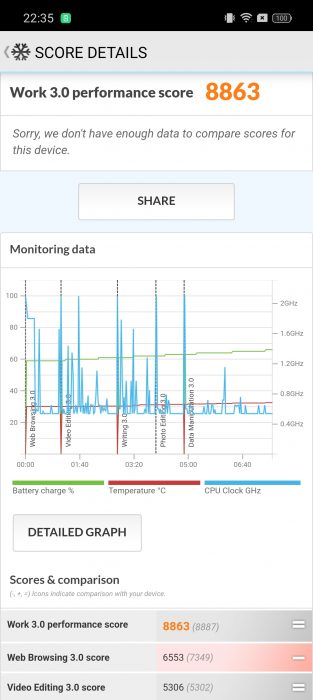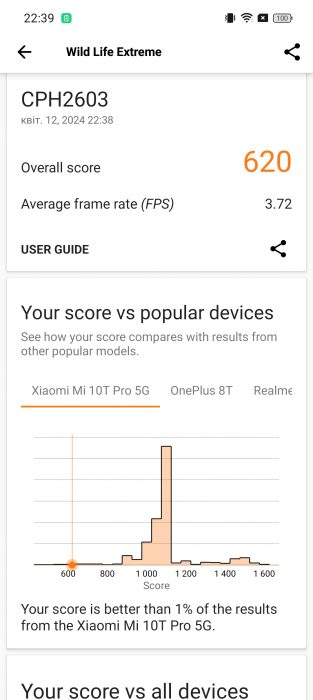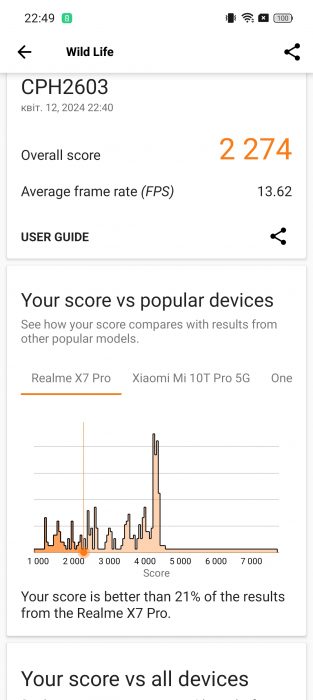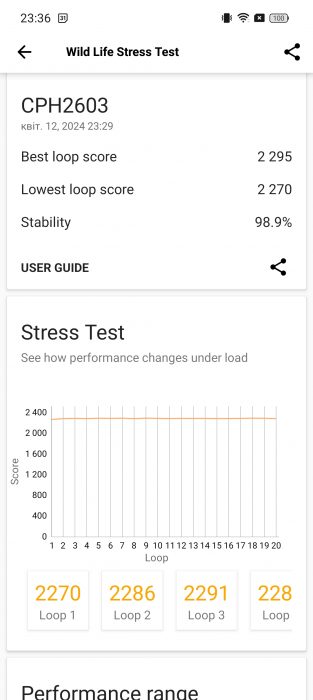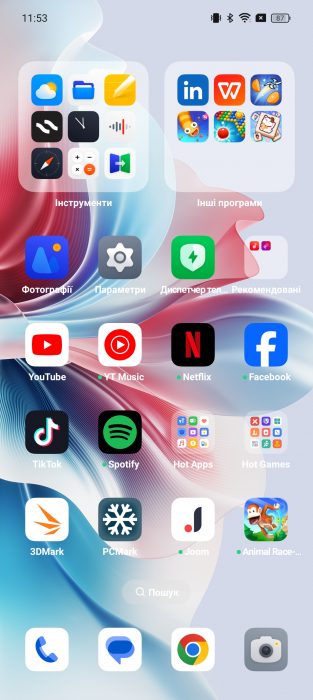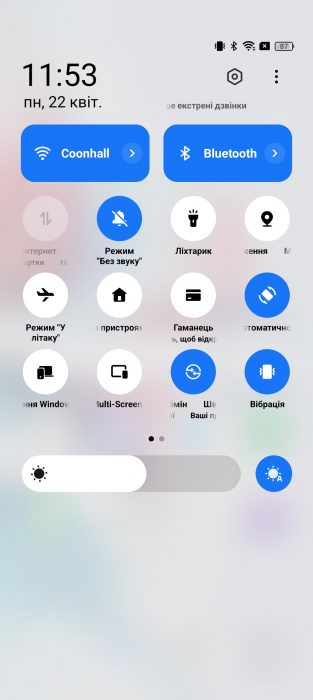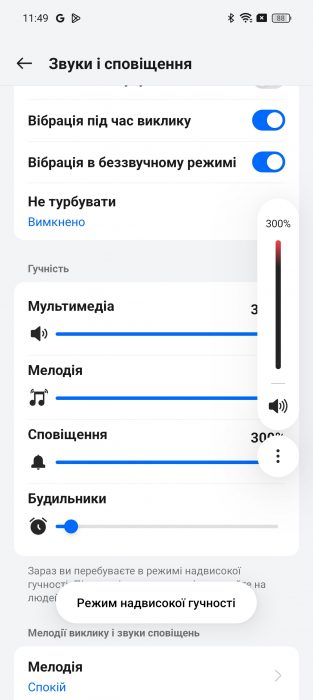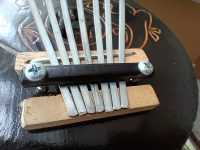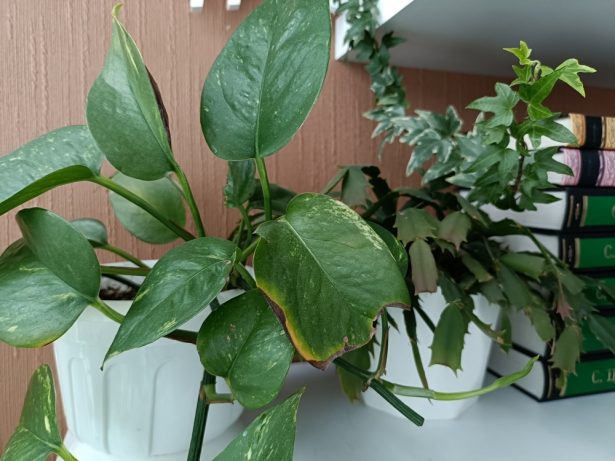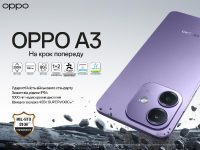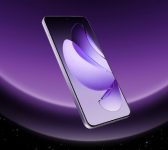Oppo Reno 11F smartphone review: excellent battery!
03.05.24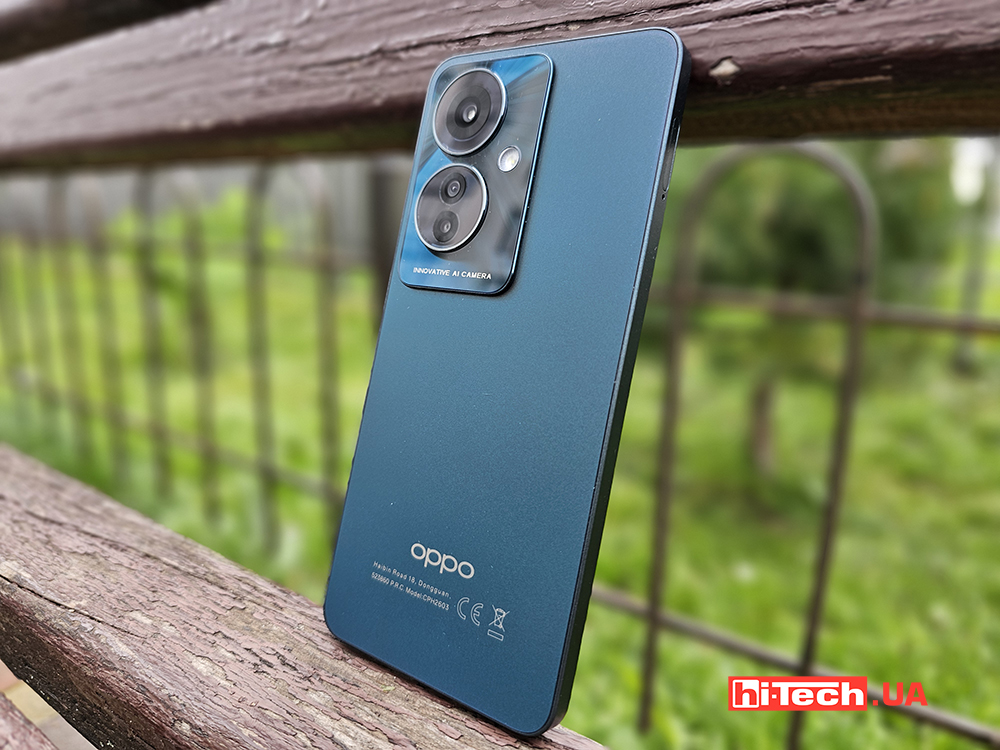
Oppo introduced its new mid-range smartphone at the beginning of the year – Reno 11F. This is a rather complex class, where manufacturers try to balance characteristics to maintain cost. Something always has to be sacrificed, and popular and necessary parameters must be implemented as best as possible. This seems to be the case with the Oppo Reno 11F. While its battery allows you to scroll through social networks and play games for days, the main camera modules remain more of a supporting tool. The same cannot be said about the front camera, which takes portraits better than the main one. But let’s talk about everything in order.
Design and ergonomics

In terms of design and ergonomics, the Oppo Reno 11F is unusual in that it is… simple. There are no elaborate shapes, bends, or rounded edges to create the image of an extravagant device. The smartphone has straight ends and only small chamfers at the transitions from the screen and rear panel to the metal frame around the perimeter.
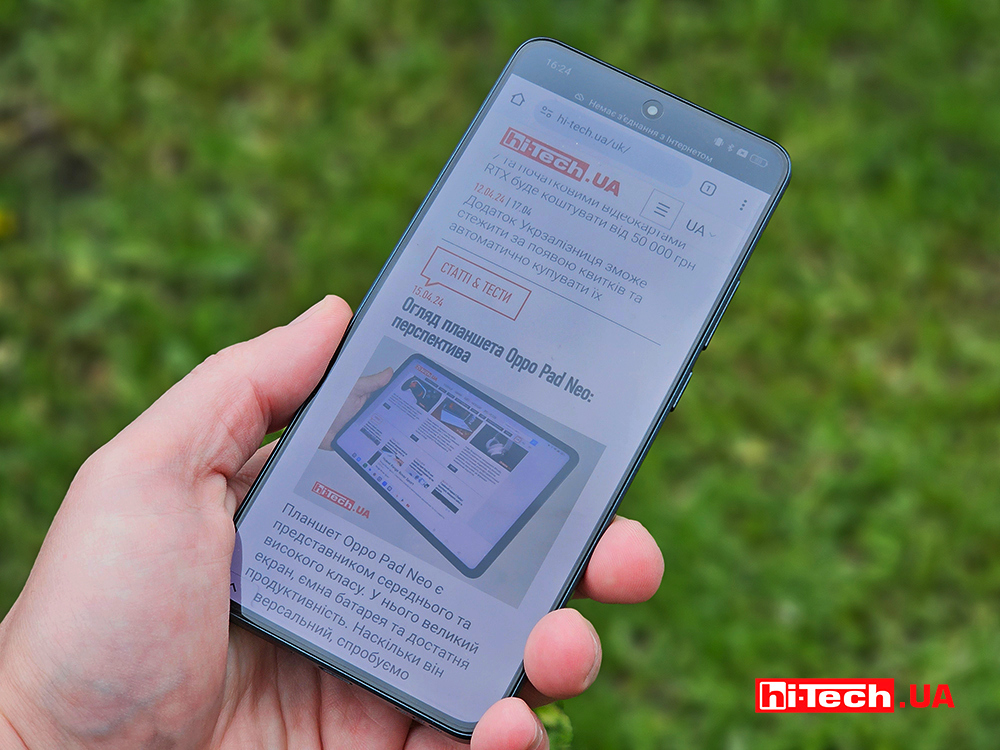
The frames around the screen are very small and what is noteworthy is that the top and bottom are the same width. The front camera is embedded in the display at the top, and the fingerprint sensor is below the screen at the bottom. Overall, the model looks neat, well-built and feels pleasant to use.
If we talk about the dimensions, then this is a smartphone of the usual dimensions and to match the class, but of medium size. It is larger than other popular models of its time from the “compact” class. But by modern standards it still seems small.
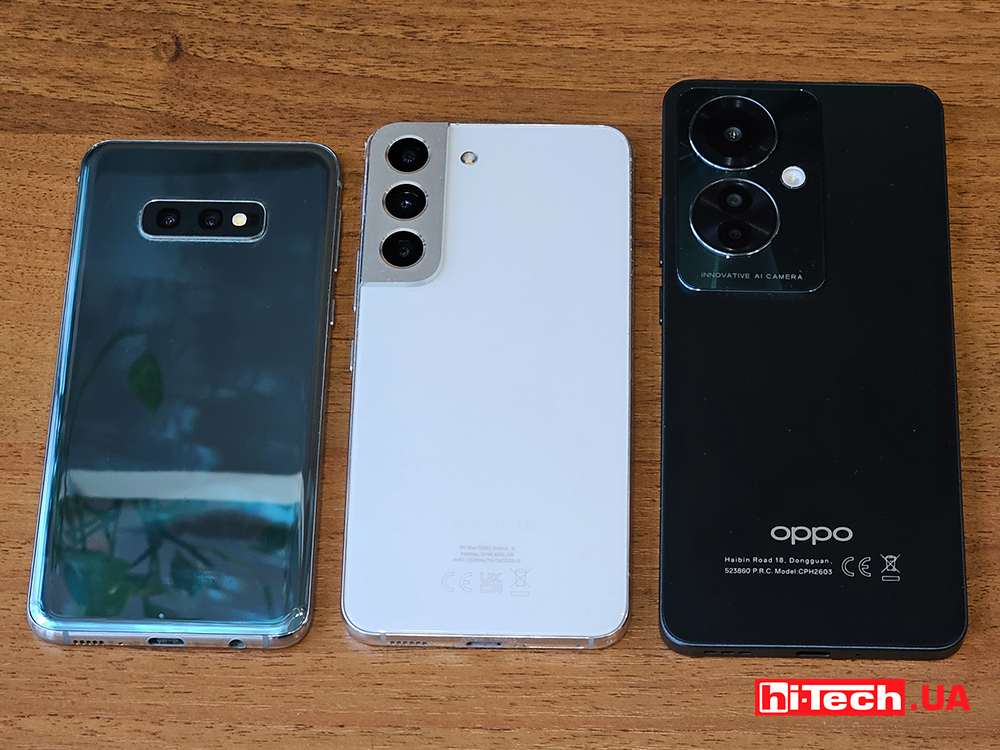
The main camera module is housed in an add-on above the rear panel. From which, in turn, circles protrude a little further, in which three modules are placed. A flash is installed next to them. I immediately want to protect all this with a cover, which, by the way, is included in the kit.
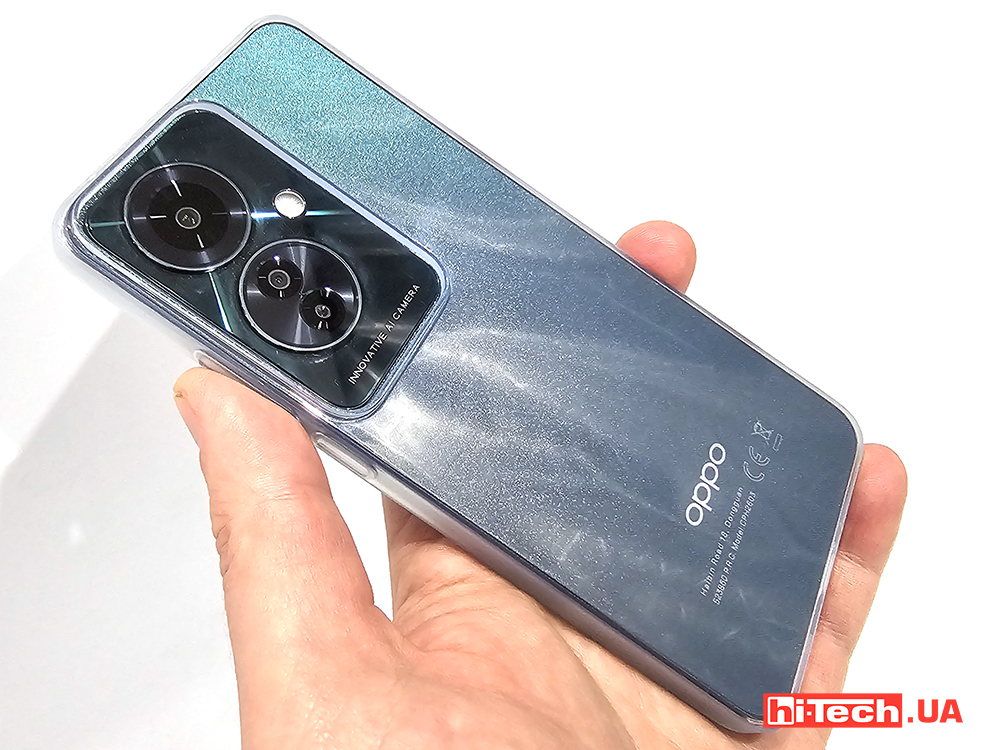

Traditionally, the back panel is the defining feature of the design. This model offers two color schemes for the Ukrainian market – green with splashes and blue with waves. It is said that magnetic particles were used here to create a pattern of “glitters”. It really looks beautiful, playing differently in the light and changing the direction of lighting.
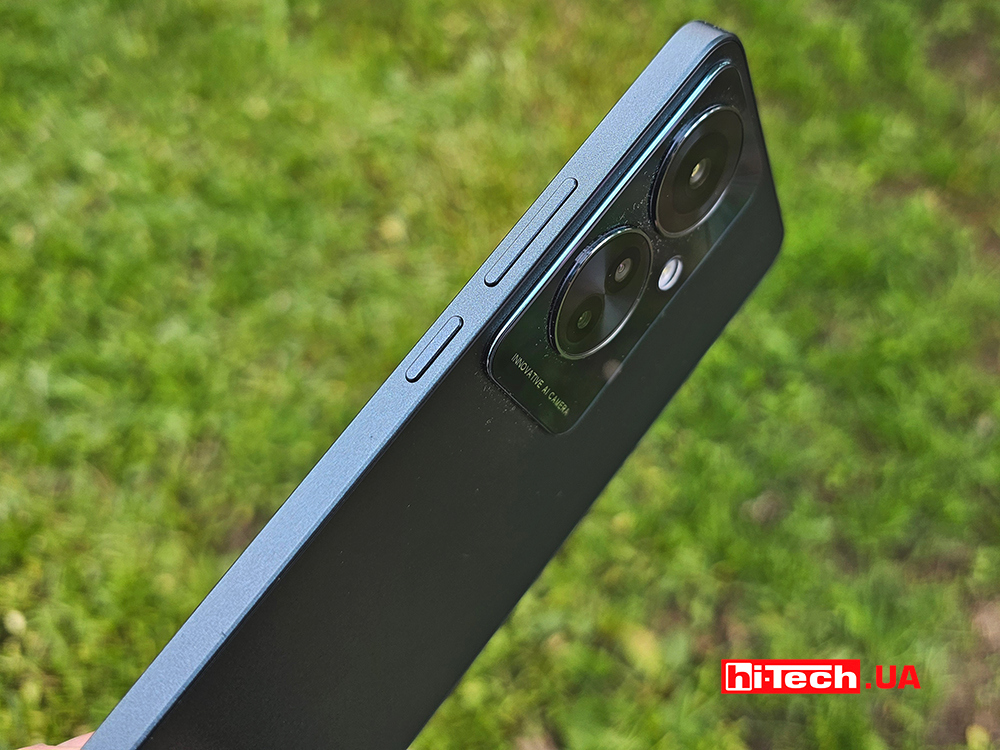
The arrangement of buttons and connectors is familiar. On the right side there is a power button and a double volume key. On the left is a slot where two SIM cards or one SIM card and a MicroSD card can be installed. It is important that the case is not afraid of water and dust, so it can be used for active sports and is not even afraid of getting slightly wet.
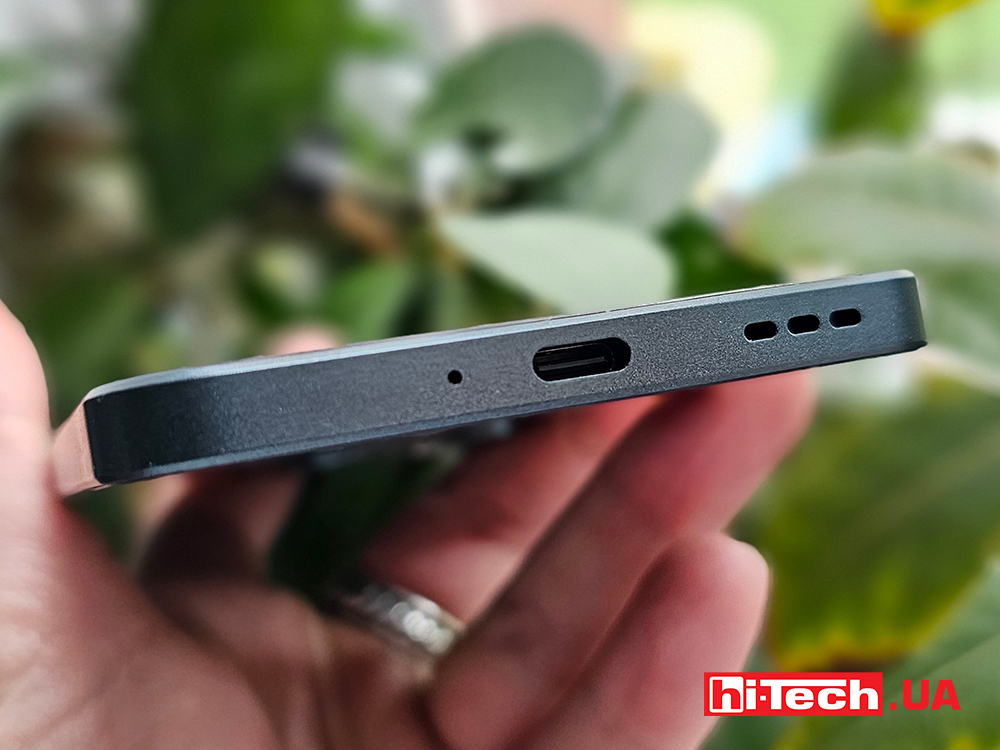
At the bottom there is a microphone hole, Type-C and an external speaker. The frame above the screen houses light and proximity sensors. Their location can be determined by a barely noticeable cutout in the protective film already glued to the screen. At the top end there is another microphone, and not an infrared port, as internet writers outside the border write (just look at the instructions).
The instructions also suggest that the NFC module is located to the right of the main camera extension. This is useful information so as not to clumsily move your smartphone over the contactless payment terminal.
Equipment
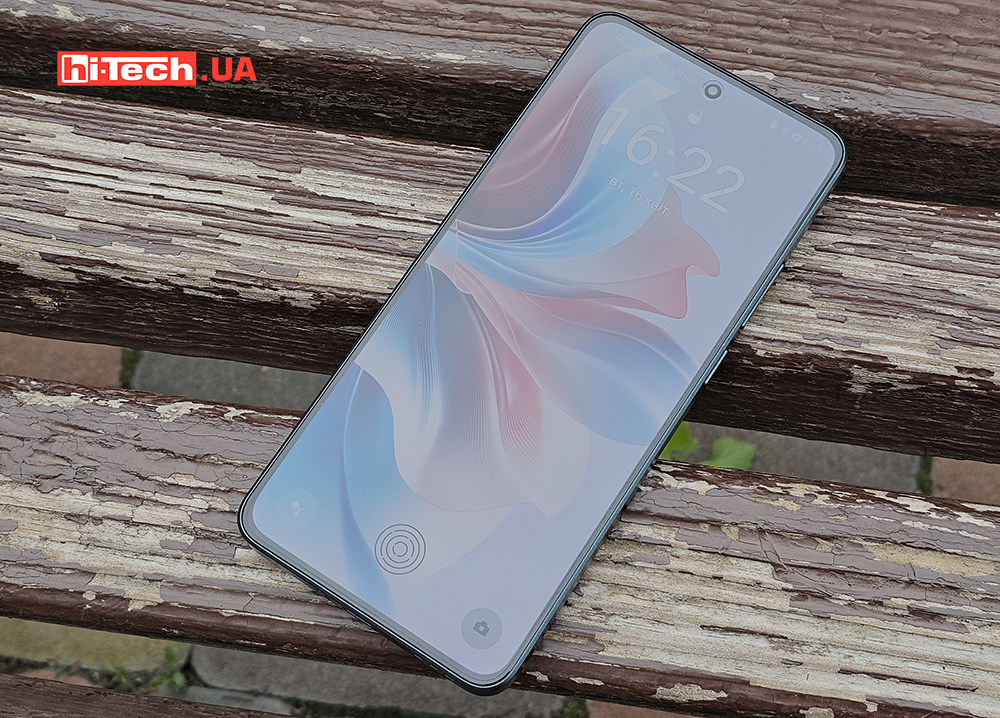
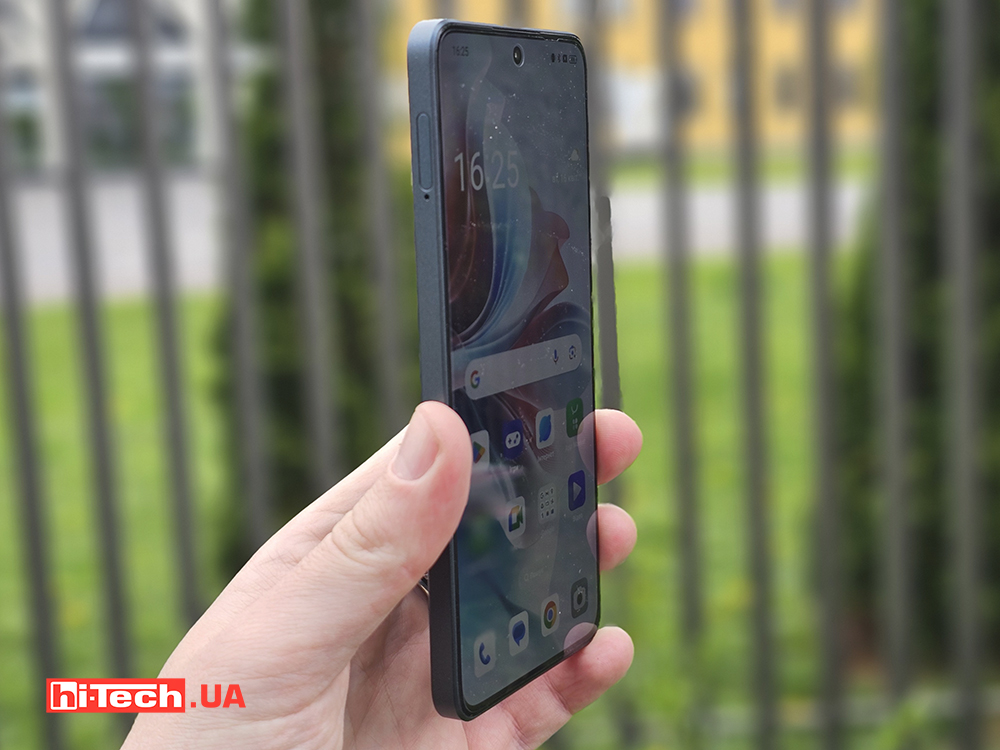
The 6.7″ display is made using AMOLED technology. It has excellent color rendition and, what is important, a high frequency of image discoloration. 120 Hz makes gaming special effects and animations enjoyable to watch. It is also bright enough, so content is readable outdoors even with a film applied on top, which noticeably adds glare.
The MediaTek Dimensity 7050 is last year’s processor, which is actually a “reissue” of the Dimensity 1080. It is built using TSMC’s 6nm technology. The CPU consists of two high-performance Cortex-A78 cores with a frequency of 2.6 GHz and six energy-efficient Cortex-A55 cores with a frequency of 2.0 GHz. At the same time, the Mali-G68 MC4 graphics processor is used.
8 GB of LPDDR4X RAM are installed, another 8 GB can be expropriated from the 256 GB drive. It is also fast, in UFS version 3.1 format. Additionally, you can install a MicroSD memory card with a maximum capacity of 2 TB.
The branded ColorOS is generally convenient and pleasant in terms of interface, but it still has applications and games installed without asking.
Cameras
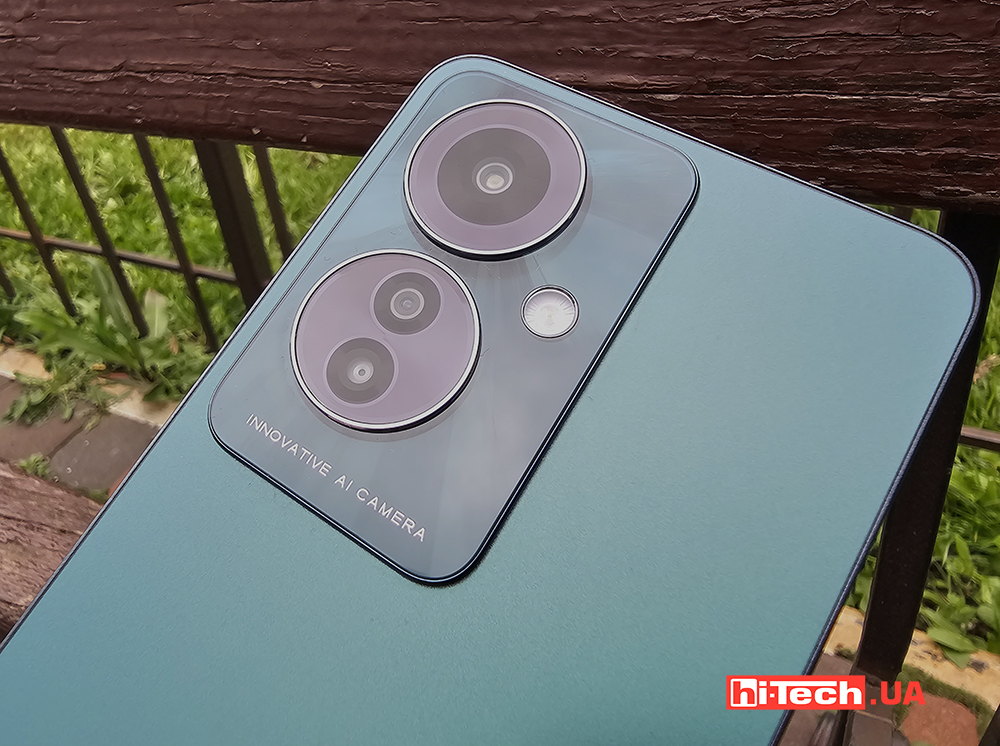
There are three main camera modules here. The main one is from Omnivision, model OV64B with a 64 megapixel sensor. It has a good aperture value of f/1.7, and it “stretches out” many dark scenes. Despite the fact that you can shoot 4K video in 60 frames on a smartphone, there is no optical stabilization.
The Sony IMX355 wide-angle module is already noticeably smaller in size. There is also a 2-megapixel auxiliary sensor that helps with macro photography.
The photo quality in good lighting is quite good. There is also enough aperture for dark areas and detail. But when shooting macro or trying to take a portrait photo, quality problems may arise if you hold the camera too close or if there is not enough light. Therefore, it was a little surprising to get much better portrait photos with the Sony IMX615 32 megapixel front camera.
Batetry
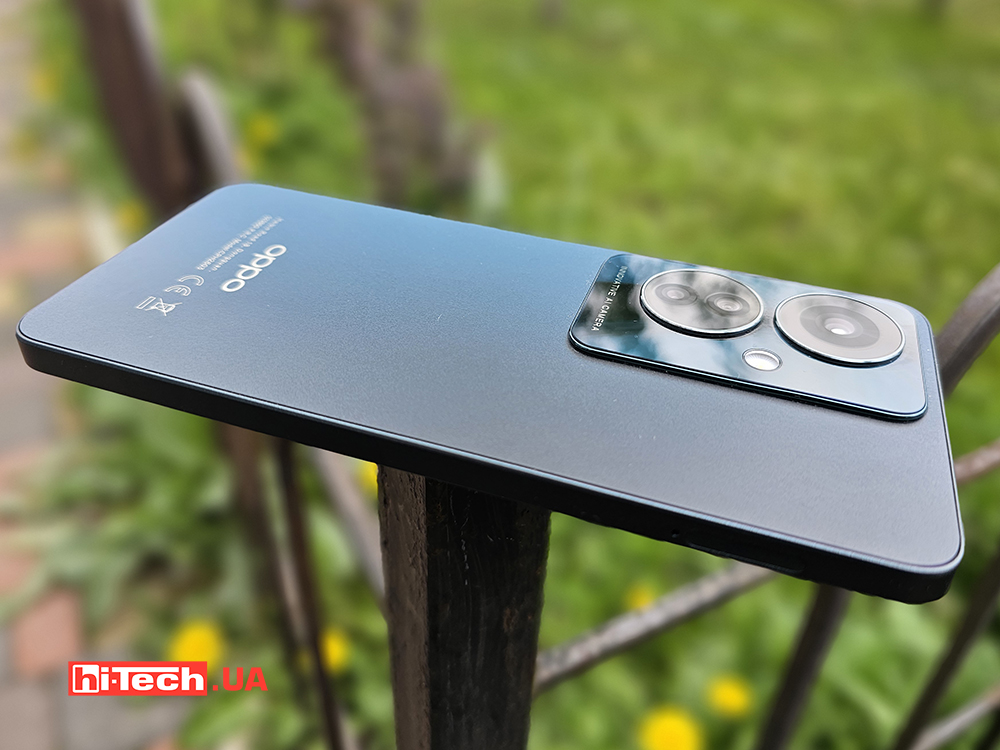
What really pleasantly surprised us about this smartphone is its autonomy. Probably because in general, and especially in recent years, battery life is a relevant and important indicator. Oppo and other brands have been installing high-capacity batteries for a long time. Along with a well-optimized Android, this allows the smartphone to work confidently throughout the day. With a synthetic load, increased screen backlight brightness and active wireless communications, we got 18 hours, which is a very good indicator.
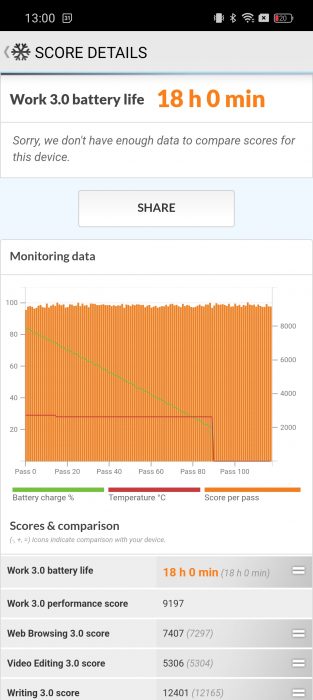
In addition, in less than 50 minutes the battery is charged to 100%, and in 10 minutes to 30%. Oppo also has its own fast charging algorithm; in this case, a 67 W power supply is available for the smartphone.
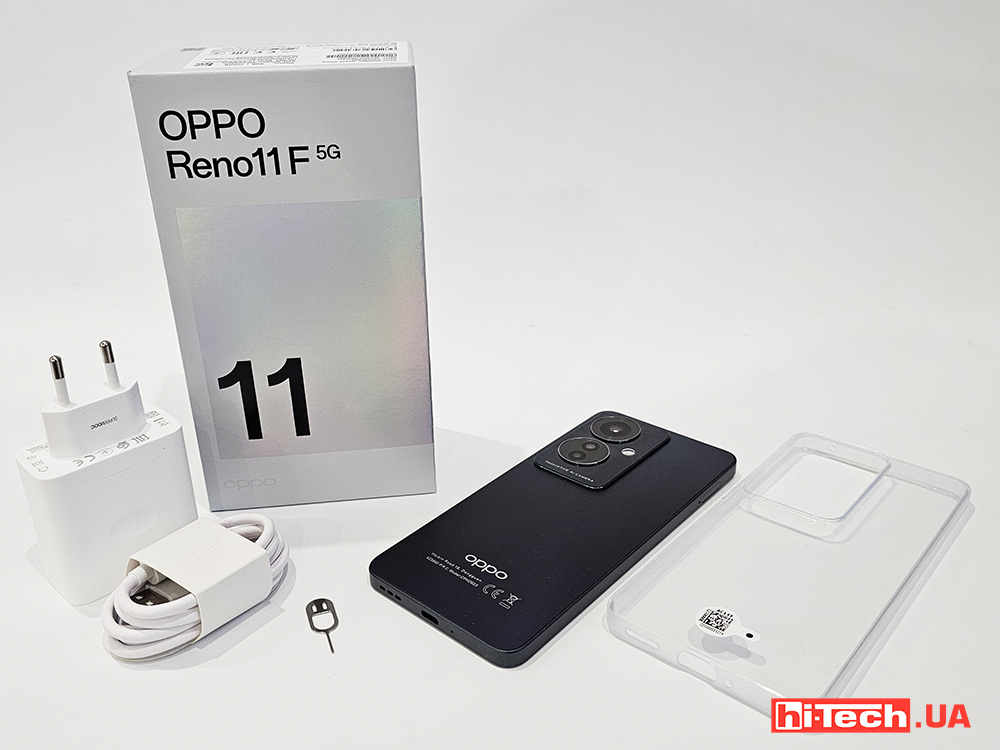
The issue of battery life with fast and powerful charging technologies is acute. It is not surprising that in the settings you can now increasingly find intelligent power consumption modes and a checkbox that limits the charge to 80-85%. All this should compensate for the detrimental effect of high currents on the properties of batteries.
Oppo has gone even further and the company claims a battery life of 4 years. We can say that it degrades before the smartphone becomes obsolete. The company supported this point with the results of a study, according to which the period of use of smartphones has increased by 30% over the past year. And 36% of users said that they have been using their smartphones for more than 3 years.
Impressions
The Oppo Reno 11F smartphone combines compromises and new battery life and optimization technologies in an amazing way. For the most part, this smartphone will last for 2-3 years of use without lags or slowdowns. Optimization and the new Android 14 make up for the not-so-new chipset. Unfortunately, in this price segment there are still questions about the camera’s capabilities, although the work of the front module will appeal to everyone who likes to take selfies.
At the same time, it has a good quality display that is equally suitable for consuming any content. In terms of equipment, the smartphone generally looks good among its competitors. There is an under-screen fingerprint scanner, IP65 case protection, and fast charging to replenish the capacious battery. All this is collected in a convenient and attractive case, which makes Oppo Reno 11F one of the best mid-range solutions.
Characteristics of the Oppo Reno 11F (CPH203) smartphone
| Connection: | GSM: 850/900/1800/1900 MHz
WCDMA: Bands 1/2/4/5/6/8/19 LTE FDD: Bands 1/ 2/ 3/ 4/ 5/ 7/ 8/ 12/ 13/ 17/ 18/ 19/ 20/ 26/ 28/ 66 LTE TDD: Bands 38/39/40/41 5G NR: n1/ n2/ n3/ n5/ n7/ n8/ n20/ n26/ n28/ n66/ n38/ n40/ n41/ n77/ n78 |
| OS: | Android 14 + ColorOS 14 |
| Screen: | 6.7”, 1080×2412, AMOLED, 120 Hz, touch layer frequency 240 Hz |
| Processor: | MediaTek Dimensity 7050, 8 cores |
| Graphics: | ARM Mali-G68 MC4 |
| RAM, storage: | 8 (+8 GB virtual), LPDDR4X + 256 GB, UFS 3.1 + MicroSD (up to 2 TB) |
| Main camera: | 64 megapixels OV64B; f/1.7; 81°; autofocus; without OIS
8 megapixel Sony IMX355; f/2.2; 112° |
| Front camera: | 2 megapixels; f/2.4; 89°
32 megapixel Sony IMX615; f/2.4; 90° |
| Card slot: | 2×nano-SIM |
| Communications: | Wi-Fi 5 802.11ac, NFC, Bluetooth 5.2, 3.5 mm audio |
| Navigation: | A-GPS, GPS, Beidou, Galileo |
| Connector: | USB Type-C |
| Sensors: |
|
| Fingerprint sensor: | Under the screen |
| Protection: | IP65 |
| Battery: | 5000 mAh |
| Charging power: | 67 W, SUPERVOOC |
| Dimensions: | 161.6×74.7×7.54 mm |
| Weight: | 177 g |
| Supplier: | Oppo AED Ukraine Company |
| Price: | $260 |
Rating:
+ ergonomics
+ autonomy
+ fast charging
+ fingerprint scanner under the screen
-no optical stabilization
Read also:
- Smartphone review Xiaomi 11T: flagship for the people
- Smartphone review Oppo Reno10 Pro 5G: your balance
- Smartphone review Oppo A78: a lot of useful things inexpensively
Editor
Don't miss interesting news
Subscribe to our channels and read announcements of high-tech news, tes
Oppo A6 Pro smartphone review: ambitious

Creating new mid-range smartphones is no easy task. Manufacturers have to balance performance, camera capabilities, displays, and the overall cost impact of each component. How the new Oppo A6 Pro balances these factors is discussed in our review.
Editor’s Choice 2025. Best devices of the year by hi-tech.ua
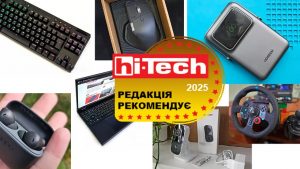
The best gaming laptops, mice for work, gaming keyboards, smartphones, and wireless headphones of 2025. Among them, we will highlight the most interesting ones and those that we can recommend buying.
NVIDIA is introducing restrictions for all GeForce Now users games NVIDIA
NVIDIA explains the decision by the desire to maintain stable platform operation, high streaming speeds, and minimal queues for users.
Memory shortage forces ready-made computers to be sold without RAM computer ram
American company Paradox Customs has announced the launch of sales of ready-made desktop PCs without installed RAM. The company explains this decision by the shortage of RAM modules

